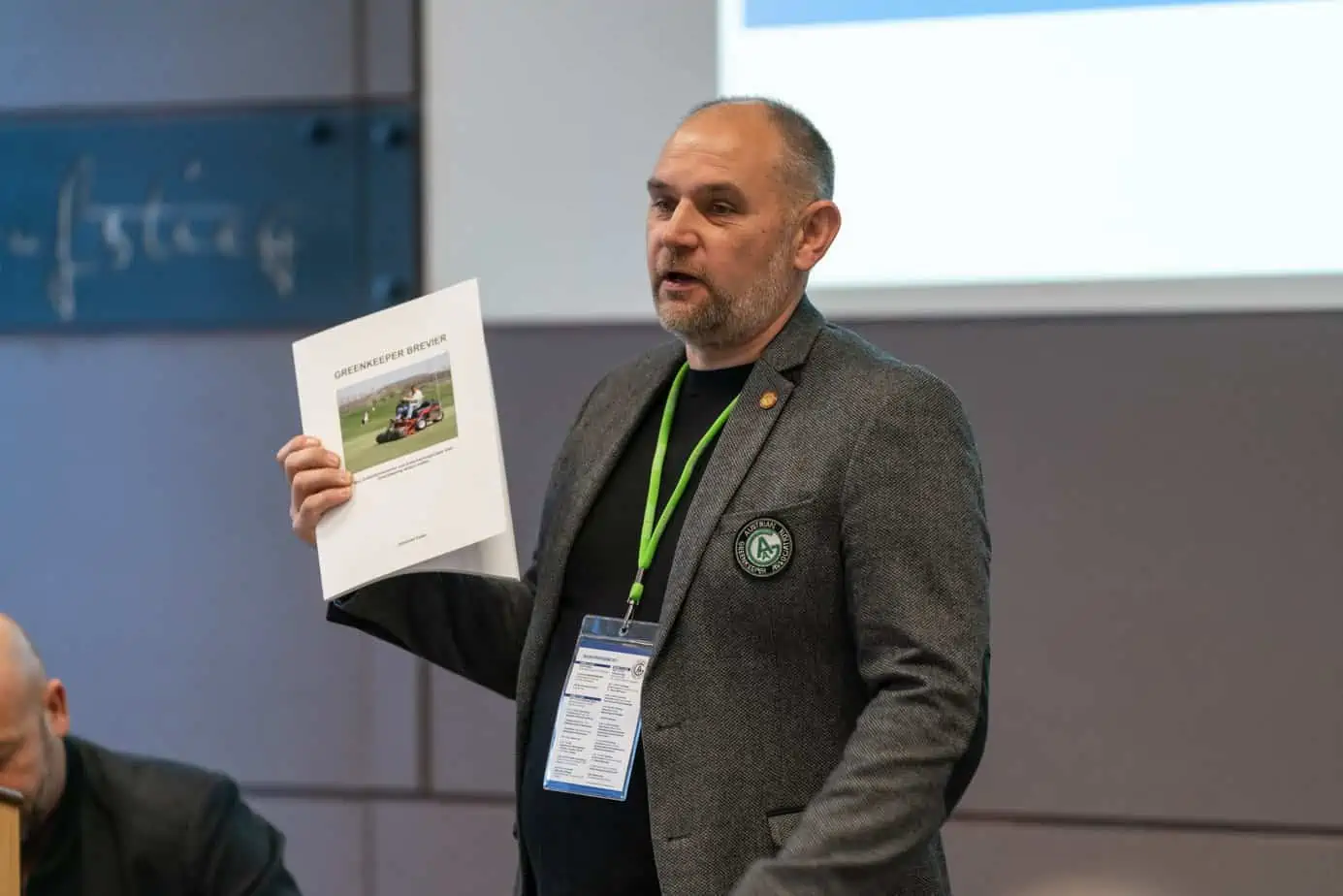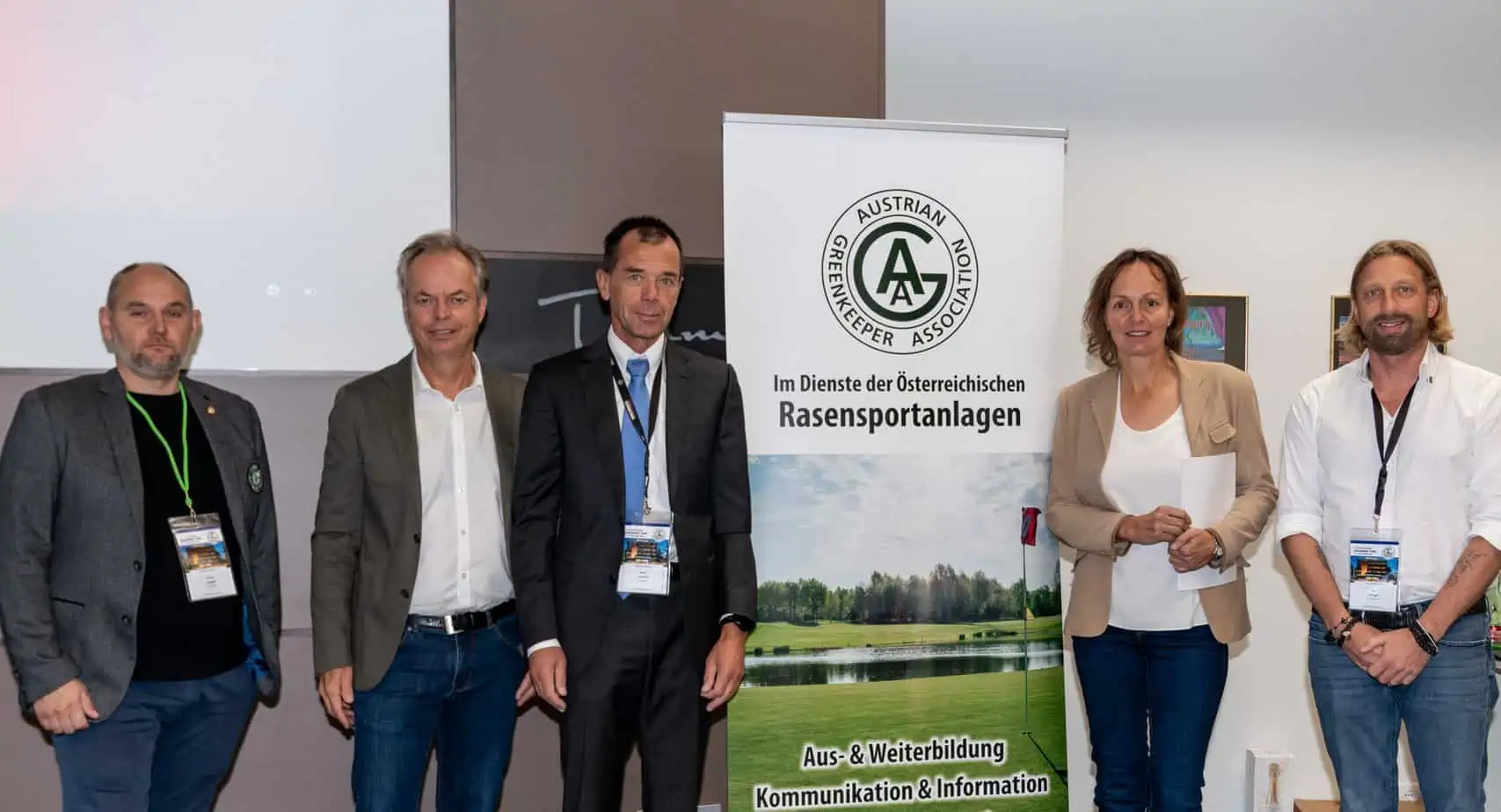Austria’s greenkeepers discuss future issues
The topic of water management was the focus of the annual meeting of the Austrian Greenkeeper Association in mid-November in Schladming. “These points will certainly continue to occupy us intensively in the coming years,” explained President Andreas Leutgeb, who received positive feedback from the participants for the selection of topics and drew an all-round positive conclusion from the conference.
Sven Weinberger, specialist for irrigation systems, Bernd Leinauer, professor at New Mexico State University, Thomas Himmel, golf course designer from Munich, and Petra Himmel, founder of Golf Sustainable, showed how diverse the topic of sustainable water management really is. Sven Weinberger provided concrete approaches for better use of on-site sprinkler systems during his two presentations. Among other things, he vividly demonstrated that a triple arrangement of sprinklers is significantly more water-efficient than a quad constellation. Weinberger’s advice to the Austrian greenkeepers was clear: dealing with the details of the golf course’s irrigation system is time-consuming but worth it.
Water management in context with course design
For Thomas Himmel, who primarily highlighted the consequences of betting extremes such as drought or heavy rain on golf course design, it is clear that the topic of water management must always be seen in the overall context of game purpose and game strategy. “Anyone building a storage pond today should use the excavated material immediately to make improvements on the course, for example, to tees or greens.” In addition, he recommended, in light of increasing heavy rainfall, a critical look also needs to be taken at parts of the golf course that are recognizably draining water incorrectly, are built too low or are inappropriately designed. “Also, ideally, precipitation should be captured and discharged into a storage pond, for example, to achieve self-sufficiency in water supply,” he noted.
Bernd Leinauer, who holds a professorship in plant research in New Mexico, made clear how advanced the discussion about new methods of water conservation already is in parts of the United States. “In parts of the U.S., water bills are now the largest cost of golf facilities.” The precise analysis of grasses is a consequence, he said. In this context, Leinauer rejected the trend to use Festuca only as a water-saving panacea. “Our recommendation is Kentucky bluegrass,” he said, summarizing the results of a study that included Festuca grasses and analyzed their performance on dry sites.
The collection of scientific data and the corresponding results need to be communicated to the golfer at the end in order to adjust the golfer to the challenges and changes that will occur due to climate change. Sustainability expert Petra Himmel gave this message to the Greenkeepers. “Your position at the club is central to that because you deal with the golf course and the weather on a daily basis,” she noted. “Use your knowledge to bring the golfer along with you on the climate change issue. It’s absolutely critical to the future of golf facilities.”








 Image: Destination Navarino/Temes
Image: Destination Navarino/Temes